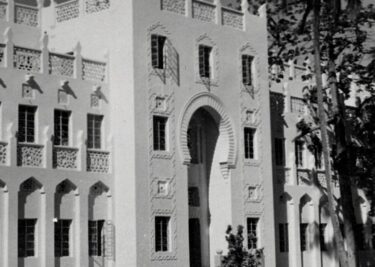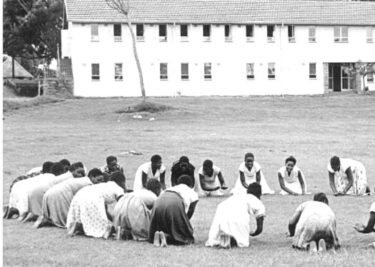The History of St. Paul’s University

Image credit: St. Paul's
As one of the oldest tertiary institutions in Kenya, St. Paul University’s history goes so far back that it intertwines with Kenya’s sordid history of the Arab slave trade in the 19th century. When missionaries came to Kenya, one of the groups that set down roots was the Church Missionary Society (CMS) – one of the missionary organisations set on ending the slave trade. In fact, the missionary group forced the British government into signing the Frere treaty in 1873 which ended the export of slaves – but domestic slaves were still at the mercy of slavers.
For CMS, the plight of slaves was coupled with the need for their education. In 1875, these missionaries set up a settlement for freed slaves a short distance from Mombasa. It was called Frere town – a name reminiscent of the treaty that spelt the beginning of freedom.
While at the settlement, the former slaves became students of Divinity and gained training in Christian leadership. The settlement began with just six learners who emerged as teacher evangelicals. From there, the settlement began to train more Africans to take up ordained positions in the Christian Church and the centre came to be known as St. Paul’s Divinity School. All this was done with the aim of growing the Anglican Church of Kenya. After all, without trained African leaders, the church would never survive on the continent.
A Joint Venture
The fledgling Kenyan Anglican Church and by extension St. Paul’s Divinity School existed in a minefield of complicated politics. CMS had several aims including evangelising through St. Paul’s. But they also aimed to gain public funding and protection from the local British colonial administration to ward off Arab agents in the area who preferred to keep slaves for their economic benefit. Trouble also brewed within the church. Some members saw no value in training students at St. Paul’s and felt the future of the church lay in a European-led model. The CMS in London was another pain in the side of the growing church. It presumed itself to have superiority over the Anglican Church of Kenya and presided over even minuscule matters such as the amount paid for a new door at Frere Town. Talk about micromanagement!
Still, in 1903, a subtle change came to Frere town. St. Paul’s Divinity School had set down a foundation stone for all to see. But the need to set up a more extensive theological college meant a move to Limuru. In 1936, to raise funds for the new land and compound, St. Paul’s sold its lot in Frere town – a move met with consternation from families who had lived in Frere town since the 1870s and felt a sense of ownership over the area. Even in these protests, the school moved and began a new journey closer to central Kenya.
Branching Out
Up until 1949, the school was purely Anglican. However, that year, the Presbyterian Church of East Africa and the Methodist Church in Kenya presented their own students for training in ministerial positions. The presence of all three churches in the school necessitated an official system of cooperation for ease of operation. In 1954, the churches came together to form a College Council to govern school matters, and in 1955, the school began to go by the name St. Paul’s United Theological College.
Not a stranger to opening its arms to different owners, the official fourth and fifth members came in the form of the Reformed Church of East Africa and the National Council of Churches of Kenya joined in 1973 and 1993 respectively. This was called an ecumenical partnership based on the idea that Christians from all denominations should come together and prioritise unity. The group unlocked access to a wide range of students from all over the world seeking divinity-related qualifications.
Continued Expansion
In 2007, the school gained the all-important Charter that dubbed it as St. Paul’s University. After almost a century of doling out faith-based knowledge, the school was finally approved to grant its own degrees. The school grew to offer training to Bishops, General Secretaries among other church leaders as well as courses in Communication, Health and Business. Students can access these undergraduate and postgraduate courses across the school’s four campuses in Limuru, Nairobi, Nakuru and Machakos.
The school’s vision is to be ‘A University of Academic Excellence Based on Christian Principles Producing Graduates in Various Fields for Global Service.’ More than a century on, the institution continues to endeavour to create a shared ground where its over 6,000 students can have their diverse training needs met.
Have you ever pursued a theological course? Did you attend St. Paul’s at any of its campuses or know someone who did? We’d love to hear about your St. Paul’s experiences in the comments!



